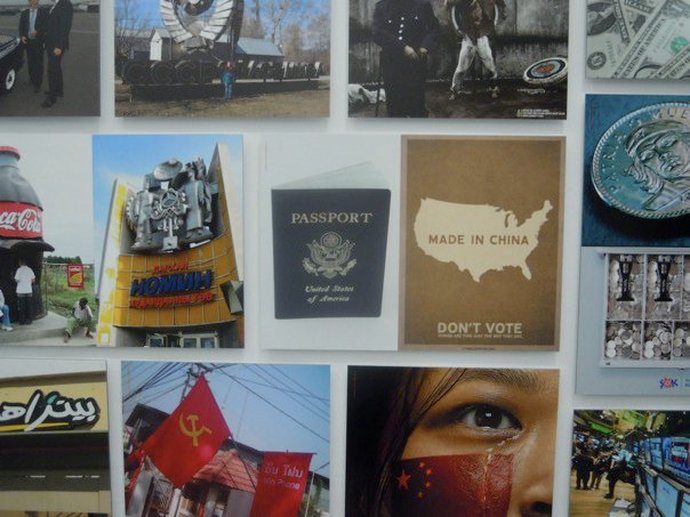14 April - 10 July 2011 CAAC Sevilla
Exhibition Session: The Political Constitution of the Present
by Rudy Vigil
Just a few days before the end of the show we went to Seville’s CAAC (Centro Andaluz Arte Contemporáneo) at the ancient monastery of La Cartuja. Mostly video installations, photos and some drawings, the show attempts to analyze Jean Baudrillard’s postmodern idea that in contemporary society, where reality is constructed from our different experiences one individual or society from another, we instead produce simulations, simulacra. Andreas Huyssen takes this ideas a step further and posits that because there is no reality, only simulation, then there is no utopia, or hope for a better reality.
The show is divided into two parts: the first section “Description of the lie”, a kind of prologue to the systems of production of the simulacra of the real. Here there are two pieces William S. Burroughs, reciting Bertolt Brecht’s, What Keeps Mankind Alive? – a dystopic view of people oppressing others. The other piece was done by Alfredo Jaar, who recovers the analysis on Pier Paolo
The second, broader section, is entitled "Collapses", although, as the exhibition description states, it could just as well have borrowed Baudrillard's term "Implosions", since contemporaneity can be described as an implosive situation.
Examples of pieces in this section are: Jan Peter Hammer’s “The Anarchist Banker”, Named after the short story written in 1922 by Portuguese poet Fernando Pessoa, Hammer's video restages Pessoa's dialogue between the banker and his secretary as an interview between a banker and a TV moderator. It is an example of “doublespeak”, where the ex-banker, who has taken home and enormous retirement and bonus after the 2008 bank bailouts, defends his position as anarchist, and basically nullifies the moderators vehement critic.
Daniel García Andújar’s Postcapital Archive (1989-2001, developed through research of media and internet imagery, explores stereotypes generated between two extraordinarily resonant moments in recent history. The work reflects the nature of archive, mechanisms of ordering, compilation and representation that are used to categorize knowledge.
Rirkrit Tiravanija’s “Fear Eats at the Soul”, is a series of new items published in the Frankfurter Allgemeine Zeitung in Sept and Oct 2008 featuring the collapse of Lehman Brothers (4th largest investment bank in the US).
Artur Zmijewski’s “Democracies” is a series of 20 video monitors showing 23 documentary shorts filmed by the artist showing crowds of people in various places in the world for disparate reasons: football championships, military parades, funerals of public figures, war victory commemorations and protests against wars and territorial invasions. By capturing human multitudes, the artist focuses on analyzing the political use of public space, dominate social conditioning and the form that public opinion and freedom or nonfreedom of expression take in these mass meetings. It is a cultural study of group behavior whose most prominent common feature is the deafening roar of the human race.
This second section is in turn divided into four collapses: the collapse of Communism, the collapse of Capitalism, Democracy, and that of the Geo-political. That is to say - according to Huyssen - "Utopia never dies alone: it drags along its counter-utopia." Therefore, the fall of Communism drags along its counter-utopia - Capitalism - which in turn drags along Democracy, since the latter it can be said to have linked its destiny to it.
The likely collapse of the expansive system typical of Capitalism - Colonialism - would, in turn, involve a geo-political "implosion". For these reasons, we should seriously consider the end of Utopia as "our problem", the problem of our times, since, as Huyssen points out, its scope "is much greater than we would like to admit". We should, therefore, urgently rethink and recalibrate the real, since, Without Reality There is No Utopia. Rudy Vigil

Ed Hall








 RSS Feed
RSS Feed

